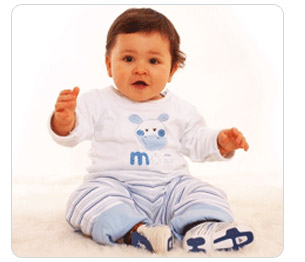
Until recently , typhoid was considered a disease of children above 3-5 years since it presented itself in an atypical clinical picture in infants and young children. This was further hampered due to difficulty in getting enough blood samples for appropriate culture isolation. The laboratories were not well equipped with good quality media, reagents & trained personnel. Introduction of bone marrow sampling using very sharp needles for culture identification has made detection of typhoid cases more amenable Hoffman S.et al.( 1986).
Reports on a typical clinical picture of typhoid in infants :
-
Sinha, A.et al.(2004) defined typhoid fever in infants as fever which lasted more than 5 days, with no response to antimalarial therapy, coupled with bradycardia and splenomegaly. Almost 30% of such cases suspected for typhoid fever were found to be due to para-typhoid.
-
Sen, S.K. and Mahakur, A.C.(1972) reported that continuous temperature hepato- splenomegaly and bradycardia were less frequent in children,however pulmonary signs, lymphadenopathy, hyperpyrexia and toxic tongue were more frequent. Children suffered more from complications like constipation followed by diarrhoea and tympanitis. Pulmonary complications e.g. bronchitis, bronchopneumonia, pneumonia and neurological complications like meningitis, encephalopathy, convulsions, typhoid state were more frequent in children.
Due to these atypical clinical presentation , clinicians usually resort to arrive at a diagnosis by a process of elimination of possible disease like malaria etc. to call the case as of typhoid fever.
Recent reports confirm that infants and children below 2 years of age are highly susceptible to typhoid fever and constitute a high percentage of cases of typhoid fever.
Reports of typhoid fever in infants and children
A large number of studies have revealed high incidence of typhoid in infants and children below 2 years of age :
- Sinha,A. et al.(1999) reported in their studies in Delhi area, the highest number of typhoid cases in children below 5 years (27.3%) compared to 11.7% in 5-19 years and only 1.1% in 14-40 years age group.
- Saha ,M.R. et al.(2003) reported in their studies in Kolkata area that children between 2-3 years age group are the most susceptible(35.6%).
- Gupta, A. et al.(2001) reported significant number of patients were below 3 years age, the youngest being an infant of 7 months in Jaipur area.
- Saha, S.K., Baqui, A.H. et al.(2001) reported in Bangladesh that majority (54.5%) of culture positve typhoid cases were from children younger than 5 years. Out of these 27% were in first two years of life (0-5 months=0.8%, 6-12 months=8.7%, 13-24 months=17.5%)
All the above referred studies are strong pointers to the fact that typhoid causes serious disease in infants for which there was no specific vaccine available for active immunization till now.
The hygiene is very difficult to maintain for infants & toddlers, thus exposing them to more chances of getting infected. The extra cautious approach in the use of antibiotics in children makes the job of pediatrician very complicated.
